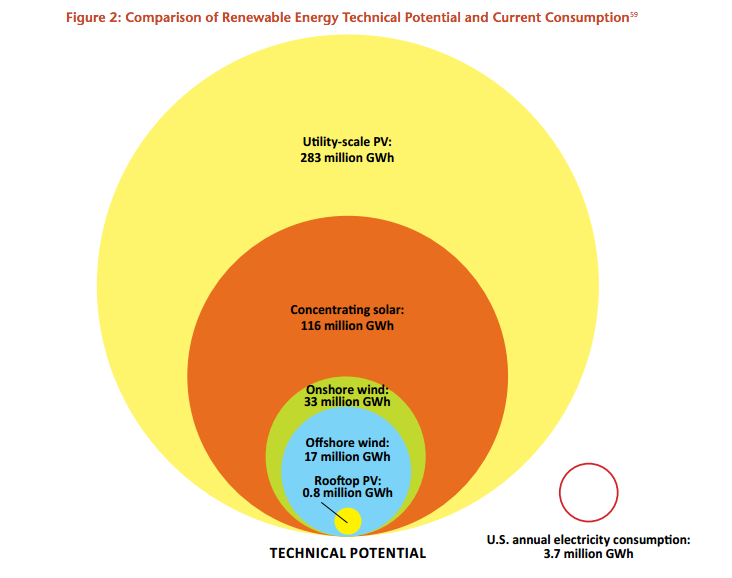100 percent renewable energy: 100 percent possible, 100 percent happening.
Over the past couple of weeks, a much-needed conversation about moving to 100 percent renewable energy has exploded into the national spotlight. Unfortunately, the focus has largely been on personal disputes and deep-in-the-weeds debates among folks who basically agree instead of a productive conversation about how we can get there.
Over the past couple of weeks, a much-needed conversation about moving to 100 percent renewable energy has exploded into the national spotlight. Unfortunately, the focus has largely been on personal disputes and deep-in-the-weeds debates among folks who basically agree instead of a productive conversation about how we can get there.
There should be little doubt that we can move our country — and our world — to 100 percent renewable energy before we experience the worst impacts of global warming. Last year, Environment America Research & Policy Center published a report with Frontier Group titled, “We Have the Power: 100% Renewable Energy for a Clean, Thriving America” that examined various scenarios through which we could re-power our society with renewable energy, mainly by cutting our energy use and ramping up solar and wind.
There are no lack of reasons for shifting completely away from fossil fuels. First and foremost, renewable energy makes us safer and healthier, protecting our communities from air and water pollution, as well as the damaging effects of global warming. Shockingly, 72 metropolitan areas in this country still experience at least 100 days of unhealthy air pollution every year. This is unacceptable, especially when it’s totally avoidable.
If we power our country with 100 percent renewable energy, we would also avoid the many harmful practices related to fossil fuel extraction and transportation. Instead of authorizing the construction of pipelines like Keystone and Dakota Access, and instead of fracking for oil and gas near our precious water supplies, we can build wind turbines and install solar panels. In an attempt to present that choice in stark terms, groups are now protesting the construction of the Keystone pipeline by building solar panels in its path. We just simply don’t need to endanger our health and climate when there are viable alternatives, especially when you consider that pipelines were responsible for over 300 ‘significant incidents’ in 2016 and over 5,600 since 1996.
Going 100 percent renewable is not only the right thing to do, but it’s also 100 percent possible. In the United States, we have virtually inexhaustible renewable energy resources that we’ve only just begun to harness. According to the National Renewable Energy Laboratory, we have enough sunlight to produce more than 100 times our current electricity needs, and 10 times enough wind to do the same. As if that wasn’t enough, we also have immense potential to reduce our energy needs through improved efficiency. By one estimate, we could reduce our overall energy use 40 to 60 percent by mid-century. This should lead us to believe that there are no insurmountable technological or economic barriers to 100 percent renewable energy.

What’s more, the price of solar and wind power has plummeted faster than even the most optimistic projections. We’re seeing similar trends with electric cars and battery storage as well. With these rapid declines in cost and increased urgency to act on climate, a growing movement of towns, cities, states and businesses are committing to going 100 percent renewable. As of now, 37 cities across the country have announced 100 percent renewable energy goals, including San Diego, the eighth largest city in the country. Large corporations like Walmart, General Motors, Google and IKEA have made similar commitments.
The progress we’ve seen, especially recently, should inspire confidence that we can completely re-power our lives with renewable energy. However, getting there is not a foregone conclusion. That’s why we’re working hard in states like California and Massachusetts to pass laws committing them to 100 percent renewable energy, and it’s why we’ll be on college and university campuses this fall calling on them to make the same commitment.
We can debate the nitty gritty details of getting those last few percentage points from solar and wind, but let’s not lose sight of the fact that it needs to happen. We don’t have much time to lose, so let’s get to work.

